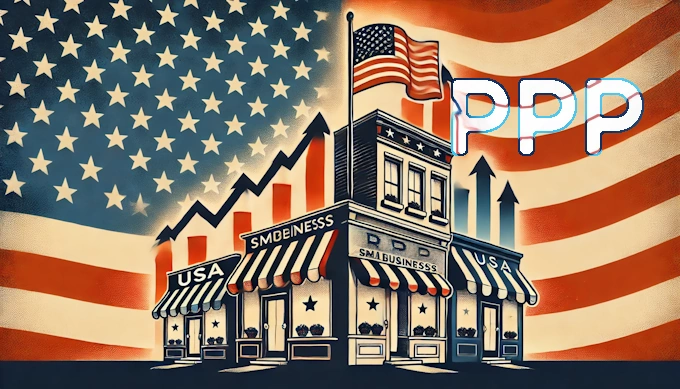PPP Success and Failure
Lessons from the Largest Small Business Aid Program in History

April 21, 2024
A new Federal Reserve analysis of the Paycheck Protection Program reveals both the remarkable reach and early stumbles of this unprecedented effort to support small businesses during COVID-19. As someone who worked directly with small businesses trying to access PPP funds, these findings validate what many of us witnessed firsthand - while the program ultimately helped millions of businesses survive, its initial rollout left many of our most vulnerable businesses behind.
A Program That Worked - Eventually
The numbers tell a compelling story of the program's ultimate reach. PPP provided support to over 8 million small businesses, reaching the vast majority of employer businesses across most sectors of the economy. By the end of the program, it had delivered an average of 12.7 weeks of payroll support to participating businesses - exceeding its original target of 10 weeks.
More impressively, the program evolved to better serve traditionally underserved communities. In 2021, loans were more concentrated in low- and moderate-income areas, with particularly strong growth in support for minority communities. Black-majority census tracts, which were initially underserved, ultimately received a higher percentage of loans (14.6%) than their share of the population (8.2%).
A Tale of Two Programs: 2020 vs 2021
The stark differences between the 2020 and 2021 versions of PPP highlight how program design can dramatically impact outcomes. The 2020 program heavily favored larger, more established businesses with existing banking relationships. In contrast, the 2021 version successfully reached smaller businesses, particularly through fintech lenders who provided over 80% of loans in minority communities.
Key Shifts in the Program
- Small vs. Larger Businesses
The 2020 program heavily favored businesses with employees, while 2021 dramatically expanded support for sole proprietors and independent contractors. In 2020, only 1% of nonemployer businesses received PPP loans. This jumped to 9% in 2021, with some sectors seeing even higher rates.
Source: Who Received PPP Loans by Fintech Lenders? Battisto, Jessica, Nathan Godin, Claire Kramer Mills, and Asani Sarkar. 2021.
- Traditional Banks vs. Fintech Lenders
The lending landscape transformed between the two years. Traditional banks dominated in 2020, providing 84.8% of all loans. By 2021, fintech lenders had become major players, originating 45.4% of all loans and over 80% of loans in minority communities.
Source: Can FinTech Reduce Disparities in Access to Finance? Evidence from the Paycheck Protection Program. Erel, Isil, and Jack Liebersohn. 2022.
- Geographic and Demographic Reach
In 2020, higher-income areas received disproportionate support. By 2021, low-income communities received more than twice the number of loans per 1,000 residents compared to 2020. The change in minority communities was even more striking.
Source: The 2021 Paycheck Protection Program Reboot: Loan Disbursement to Employer and Nonemployer Businesses in Minority Communities. Fairlie, Robert, and Frank M. Fossen. 2022
Why 2020 Left Businesses Behind
Looking back, several key factors limited the program's initial effectiveness:
- Paperwork Paralysis: Complex application requirements overwhelmed small businesses, and language barriers prevented many immigrant business owners from applying.
- Limited Lender Network: Heavy reliance on traditional banks created bottlenecks, while fintech lenders were initially excluded despite their digital capabilities.
- Misaligned Bank Incentives: Fee structures encouraged banks to prioritize larger loans, and existing customers received preferential treatment.
- Trust and Knowledge Gaps: Many small businesses were skeptical of "free money," and information didn't reach vulnerable communities effectively.
Lessons for Future Small Business Support
The PPP experience offers crucial lessons for designing future small business aid programs:
- Start with the Most Vulnerable
- Design programs around the needs of the smallest businesses first.
- Provide support in multiple languages from day one.
- Leverage Multiple Distribution Channels
- Include fintech lenders from the start.
- Create incentives for lenders to serve smaller businesses.
- Provide Technical Support
- Fund community organizations to help with applications.
- Create simplified tools for businesses without sophisticated accounting.
- Build Trust Through Local Partners
- Work through trusted community organizations.
- Provide clear, consistent messaging about program benefits.
The PPP eventually became the largest small business aid program in U.S. history, but its rocky start reminds us that good intentions aren't enough. Future programs need to consider not just how much aid to provide, but how to ensure it reaches those who need it most. The success of the 2021 program shows that with thoughtful design and diverse distribution channels, government aid can effectively reach even our smallest and most vulnerable businesses.
For small business owners, the lesson is equally clear: stay informed about available programs, maintain relationships with multiple financial institutions including fintech lenders, and don't hesitate to seek help from community organizations that understand your needs. While we hope to never need another PPP, being prepared to access aid quickly can make the difference between survival and closure during future crises.
Copyright 2025
Sri Kaza
